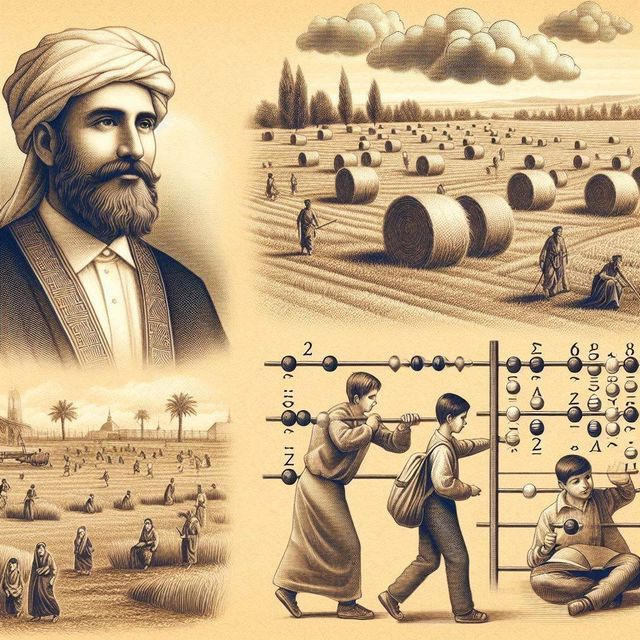-
Vijay Fafat
- Published on
In ancient times, ‘Agha, the Master’ was a rich landed proprietor living in a far-East country. “He owned numerous slaves who raised crops for him, took care of his orchards, and looked after his livestock.”. At the time of the story, only two of his wives were surviving, with a few children, one of whom was a pretty daughter, Rhia. Agha was well-to-do but the business of commerce and managing of slaves gave him some grief.
“It was the disposal of his farm products and the buying of spices, silks, and a few other items that were among Agha’s principal headaches. He had some faithful slaves and skilled supervisors, but it was difficult to find a man who could keep books, enter the sales and the purchases, and know how to figure out the amount of supplies on hand, and to tell Agha if he was making money, and if so how much.
Now Agha was a thrifty man, in spite of his great wealth, and always insisted on accurate bookkeeping and accounting. For example, if he sent to the market seventeen calves, to be sold at eleven silver-pieces each, he wanted to know what the total amount would be. Each of his supervisors and some intelligent slaves always had to carry at their belts leather bags filled with pebbles. In the above case, the slave to be sent with the calves had to put on a table, side by side, seventeen piles of pebbles, eleven pebbles in each pile, and then count the total number of pebbles. As a precaution, another slave was ordered to do the same in a different room, and then each replied his findings to Agha. If there was a discrepancy, each was given ten lashes at the whipping post, and two other slaves were called to do the addition anew, until the amount was settled. Then those who got the right amount (or at least checked each other) had to give twenty lashes to the others. This they were always glad to do, having received undeserved punishment before. This is how the old saying originated: “Accuracy is in your hands, inaccuracy on your back.”
One day, at the Khaleb market for cattle and produce, Agha noticed a young man who seemed to be earning money by using some contraption and helping vendors. When asked, the youth said:
“ “Oh,” said the young man in a pleasant lisp, “I am Math, the Abacus, and I figure out the amounts of thales for my clients. May I therve you thir? My charges are very reasonable and the accuracy is guaranteed. […] My name is Massy, or Mass for short, but on account of my lisping which you no doubt have noticed, I have to pronounce it Math, and that’s how I got this nickname.”
Sensing that Math might become a very useful servant, Agha obtained his services for 2 years to teach his servants more accurate methods of addition. For some reason, likely because the method introduced many more errors in the past when incorrectly used by his slaves, Agha hated “multiplication” and insisted that Math not use even the name but stick to addition.
For 2 years, Math used his abacus skill, his ability to reason mathematically, and his innate kindness to help the slaves. By the end of it, Math and Rhia had fallen in love with each other. Agha declared that if Math could find a way of doing his “multiplication” using simple addition so that even the slaves could multiply accurately, the couple could get married.
For weeks, Math toiled to figure out the conundrum, till one day, he saw a glimmer. He noted that multiplying powers of 10 was equivalent to adding the powers in the “exponent”. From there, he reasoned that each number, if it could be expressed as a power of 10, would make multiplication collapse to addition. Using trial-and-error while trying to ensure that the entire system hung together consistently, Math was able to express the first 100 numbers as powers of 10, his “Eureka!” moment. In excitement, he ran to Agha, proclaiming, “Lo! Agha, Rhia ith mine!”, which, corrupted over time, became “Logarithm” :-). Math and Rhia, of course, got married after some drama (which drama also explains why the part of the logarithm after the decimal is called “Mantissa”.
Very satisfying story, told with speed and verve.

